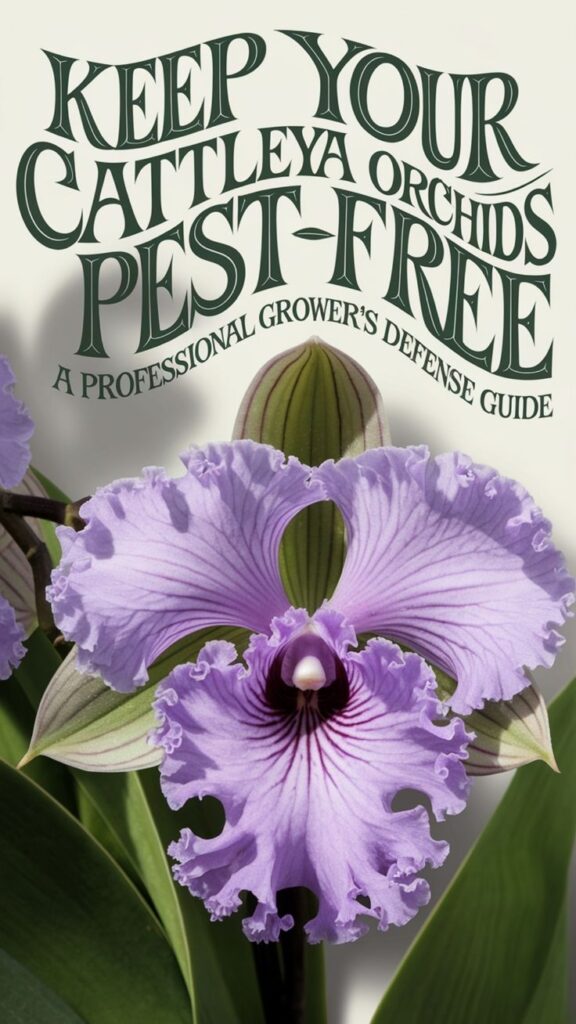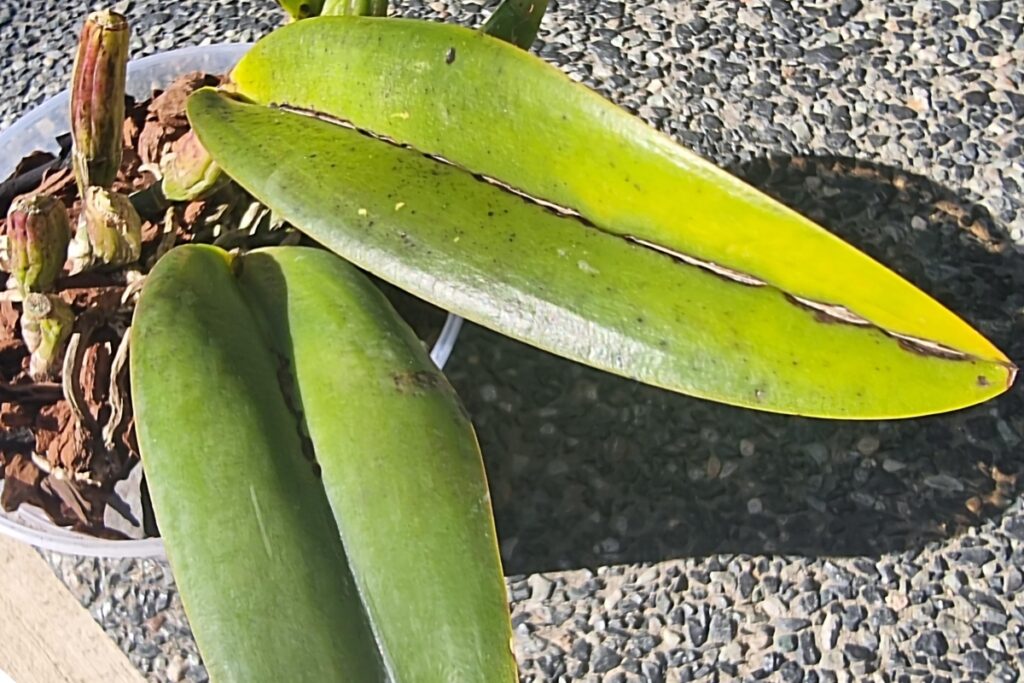While Cattleya orchids are prized for their stunning blooms, they’re also magnets for destructive pests that can quickly devastate your collection. You’ll need to master a combination of preventive strategies to keep these unwanted visitors at bay. From maintaining pristine growing conditions to implementing natural deterrents, there’s an all-encompassing approach that’ll help you protect your precious orchids – and it all starts with understanding which methods work best for your growing environment.

Contents
Essential Cultural Practices for Pest-Free Orchids
While maintaining healthy Cattleya orchids requires attention to several factors, proper cultural practices form your first line of defense against pests. You’ll need to maintain temperatures between 65-85°F, with 40-70% humidity and good air circulation from a small fan.
Keep your growing area clean by removing dead leaves, fallen blooms, and any plant debris weekly. Don’t let water pool in the crown or between leaves, as this invites fungal growth and attracts pests.
Space your orchids 6-8 inches apart to prevent pest spread and promote airflow. When you bring new plants home, isolate them for two weeks to verify they’re pest-free before introducing them to your collection.

Creating the Optimal Growing Environment
Because Cattleya orchids thrive in conditions that mimic their natural rainforest habitat, you’ll need to carefully control their growing environment. Maintain temperatures between 65-80°F during the day and 55-65°F at night, with humidity levels of 50-70%.
Position your orchids where they’ll receive bright, indirect light for 5-6 hours daily. Use clean, well-draining orchid bark in ventilated pots, and guarantee good air circulation with a small fan nearby. During winter months, you’ll want to reduce watering frequency by 30%.
Don’t crowd your plants together, as this can create humid pockets that attract pests. Instead, space them 6-8 inches apart on humidity trays filled with pebbles.
Regular Inspection and Monitoring Techniques
Building on proper environmental conditions, regular monitoring serves as your first line of defense against pest problems. Check your Cattleya orchids every 3-4 days, inspecting both sides of leaves, pseudobulbs, and root zones for signs of trouble.
Use a 10x magnifying glass to examine leaf joints and crown areas, where pests often hide. You’ll want to look for tiny specks, webbing, sticky residue, or unusual discoloration that could indicate an infestation.
Log your observations in a simple notebook, noting dates and any changes you spot. This helps you track patterns and catch problems early, when they’re much easier to address.
Natural Pest Deterrent Methods
Natural pest control starts with creating an inhospitable environment for unwanted insects. You’ll want to mix 1 tablespoon of neem oil with 2 cups of water, then spray your Cattleya’s leaves every two weeks. This organic solution repels most common orchid pests.
Strategically place sticky yellow traps near your orchids to catch flying insects, and sprinkle food-grade diatomaceous earth around the pot’s rim. You can also introduce beneficial insects, like ladybugs, which feed on harmful pests.
Create a natural barrier by applying a thin layer of cinnamon powder on new cuts and wounds. It’s an effective fungicide that also deters crawling insects.
Quarantine Protocols for New Plants
When you bring home a new Cattleya orchid, it’s essential to isolate it from your existing collection for at least three weeks. Place the plant in a well-ventilated room, keeping it at least 6 feet away from other orchids to prevent potential pest transfer.
During quarantine, inspect your new orchid every 3-4 days using a magnifying glass. Check under leaves, between pseudobulbs, and along the potting media surface for signs of pests or disease. You’ll want to look specifically for scale insects, mealybugs, and spider mites.
If you spot any issues, treat the plant immediately with appropriate measures before introducing it to your collection.
